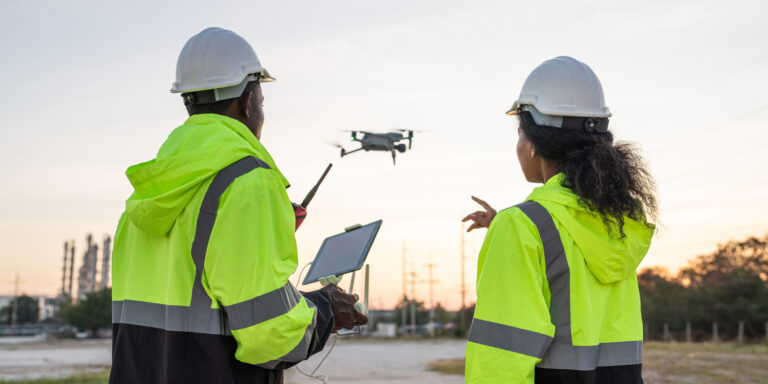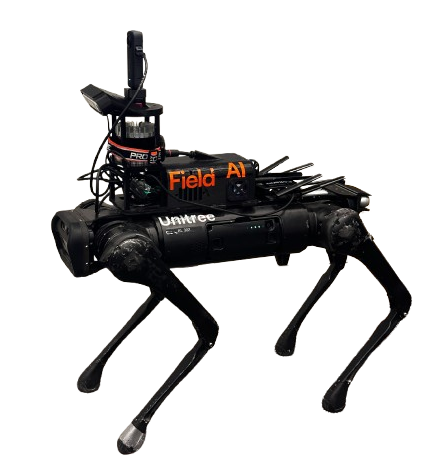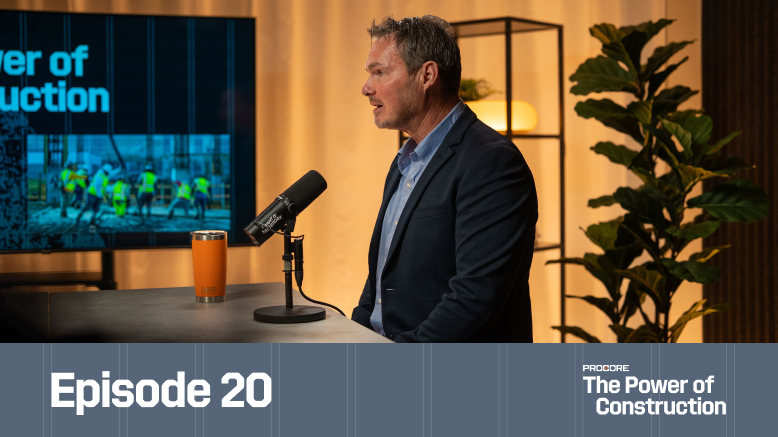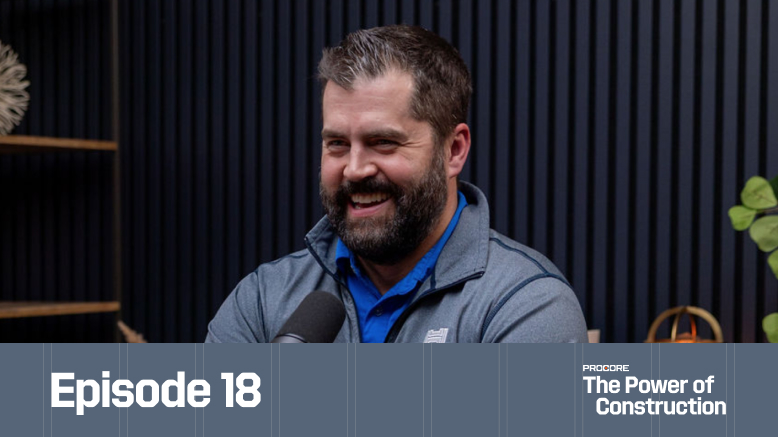— 9 min read
How Reality Capture is Reshaping the Construction Industry
Last Updated Sep 23, 2025
Tyler Hutchison
Customer Success Manager
Tyler currently serves as a Customer Success Manager at Procore. Before joining Procore, Tyler spent more than four years at Turner Construction Company, where he honed his skills through various roles. He served as a Superintendent in San Diego, California, overseeing projects from April to October 2023. Prior to that, he was an Assistant Superintendent for nearly two years, following his initial roles as an Assistant Engineer and Engineering Assistant in the San Francisco Bay Area. He graduated from Penn State University in 2019 with a B.E. in Civil Engineering. Tyler is based in San Diego.
Trey Strange
Contributing Writer
27 articles
Trey Strange is a Peabody and Emmy-Award winning writer and producer based in Brooklyn, NY. Throughout his career, Trey has worked for the Huffington Post, Houston Chronicle, Out Magazine, Brooklyn Eagle, CNBC, INTO, and New York Magazine's Bedford + Bowery. He received his Masters in Journalism and Middle East studies from New York University, and Bachelors in the same subjects from the University of Houston.
Last Updated Sep 23, 2025

On any given day, the scene of a construction site is a place brimming with important information — for example, anything from the percent-complete of drywall install to location of utilities beneath a recently poured concrete slab.
Today’s most innovative contractors and construction companies are using reality capture technologies to access and document a project's story on-site almost constantly — and by buying into these cutting-edge systems, they’re saving time and money during the build and beyond.
This article explores reality capture, including its key technologies and devices, several uses for cost-cutting, reducing rework and even its impact on safety. By following the best practices listed below, GCs and project leadership teams can implement reality capture into their workflow and begin to reap the benefits.
Table of contents
How Reality Capture Works
Reality capture technology can be defined as the use of advanced tools to create a detailed, accurate picture of a construction site at any given time. Imagine being able to walk through the project digitally, seeing every beam, pipe and wall as if on-site. That's what reality capture does—it captures real-world conditions and creates from them a digital twin.
Reality capture overlaps significantly with construction mapping, which focuses on updating and tracking site progress, but reality capture is a larger umbrella that has many potential uses, from inspection to safety planning. Essentially, it's like taking a snapshot of the project, but in 3D and with a lot more information, which then has various possible applications.
On a project at the San Diego waterfront, I was introduced to reality capture and got hooked on it. I thought, 'This is really cool and is absolutely going to take off in the industry.' One of my tasks as a superintendent was to walk the project site once a week, to capture progress and create a project as built. A big benefit I saw was that it was a great source of documentation and made it easier to tell the progress story of a project. I could look back at a day in August when we had a delay in a particular area, for example, and was able to see the cause of the problem or what may have led to it.
Tyler Hutchison
Customer Success Manager
Procore
Different types of equipment are used in reality capture, each serving a unique purpose.
3D Helmet Cameras
Workers can walk around with cameras attached to helmets. As they move through the site, the camera captures images linked to specific locations on the project drawing set, showing exactly what is happening or happened in different areas.
Drones
Drones fly over the construction sites and capture aerial images, and can get to places that might be unsafe or hard for humans to reach. These are excellent for getting a bird's-eye view, making it easy to see the site's overall layout, progress, and potential QA/QC observations.
Robot Dogs
These are high-tech, mobile robots equipped with cameras and sensors. They can help alleviate the need for a human to capture the project site, saving the project team time.
Several programming applications exist to convert these images into digital models. OpenSpace and DroneDeploy are the two of the most popular and are compatible with construction software. Using these technologies, everyone involved in the project can have a clear, up-to-date view of the work in progress.

The Game-Changing Benefits of Reality Capture
Working with reality capture technology can be helpful in many aspects of a build, from remote site management to course of construction to closeout processes and beyond.
What follows are a few ways reality capture can be most useful to construction projects.
Documentation
In construction, documentation is a safety net. It helps make sure that everyone knows what’s been done and can easily resolve disputes if they arise. Reality capture technology makes this process easier by creating a detailed visual record of the site’s progress. It’s a powerful way to track progress and protect a company from potential claims over what was or wasn’t completed with a date or time stamp.
Inspection Potential
One of the worst incidents that can happen with an inspection is that an inspector needs to see behind a wall that’s already been put up. But with reality capture, site superintendents can generate a picture of what’s behind it at the moment just before the wall was closed up, and inspectors may accept this as usable proof for their inspection. Additionally, crew members can avoid the costly and time-consuming process of tearing down and reclosing walls.
Remote Site Visits
One of the standout benefits of reality capture is the ability for stakeholders to visit the site without ever stepping foot on it. Through digital access, project managers, executives, and even owners can see the latest site conditions from anywhere in the world. This means fewer flights and less time spent traveling, resulting in significant cost and time savings. Remote access can streamline decision-making and keep projects moving efficiently.
This feature can even be used by project leadership and crew members, too.
Jobsites can be really big. So if you’re a project manager, and you need to go look at one part of the job site to write an RFI, for instance, you probably want to also provide a picture with that RFI. So instead of taking 15 minutes to walk all the way over to this other location where you need to write an RFI and take a picture on, you can go into your reality capture program and take your picture from there—saving you a half hour or more.
Tyler Hutchison
Customer Success Manager
Procore
As-Built Verifications
Creating accurate as-built records is necessary for the course of construction, as well as, future maintenance and modifications. Reality capture offers a reliable way to verify these records by providing precise visual documentation of how things were actually built versus how they were planned. This accuracy is invaluable when it’s time to make changes or perform maintenance, as it helps locate pipes or conduit without unnecessary damage or rework.
In addition, these visual aids can help the handover process easier when it comes time to submit as-builts to the building operators.
Access to Hard-to-Reach Areas
Safety is a top priority in construction, and reality capture helps by allowing workers to see areas that are difficult or dangerous to reach. Whether it’s high-up beams or narrow spaces, reality capture can provide a view into these tricky spots without the need for tying off or putting anyone at risk. This reduces the need for potentially dangerous inspections or work.
Challenges and Barriers to Adopting Reality Capture
Adopting reality capture in construction comes with a few hurdles. First, there's the challenge of getting everyone on board, especially experienced crew members who might be hesitant to use new technology. Some people aren’t comfortable with wearing cameras or operating drones, and they might not see the immediate benefits.
Another challenge can be the cost of the equipment and software needed to get started. Though the technology is becoming more accessible, there's still an upfront investment that some companies might hesitate to make.
Finally, there’s the learning curve. Everyone needs proper training to use the tools effectively, and drone operators will need a license.
Free AI in Construction Course with Hugh Seaton
Start learning today with industry expert Hugh Seaton and discover how AI can boost efficiency, reduce risk, and transform your projects.

Best Practices for Implementing Reality Capture
Overcoming barriers to implementing reality capture technology can be tough, but following a few best practices can make it easier to manage.
Appoint a Reality Capture Champion
The best way to get buy-in on reality capture from stakeholders within the company is to prove the long-term advantages and benefits. This is easiest when a respected and tech-savvy member of the team leads the charge on developing a plan to implement it.
Pro Tip
After getting the top of the company onboard, it should become a trickle-down approach. Have a champion roll it out, and loop them in with other people on projects that aren't bought in. People like to hear from their peers, and are often more receptive to feedback and advice from colleagues in similar roles.
Giving ownership of the reality capture strategy to a project team member can not only lead to lessened hesitancy—it’s also a great opportunity for a younger, promising person to step into a leadership role and support the company’s growth.
Earn Buy-in Slowly
The reality capture champion can do more than carry out the logistics of the technology rollout. They can also be immensely useful to getting buy-in across the company.
Tailor the Strategy to Specific Needs
When it comes to using reality capture technology, one size doesn't fit all. It's important to adjust the strategy based on the specific needs of the construction project.
Here’s how this can be done:
Plan around key milestones.
Identify important stages in the project, like closing up walls or completing sections. Use reality capture before these stages to document what's there, providing a clear record for future reference.
Understand the project pace.
If a project is moving quickly, more frequent captures of site conditions might be necessary. For example, if concrete is being poured often,, it’s a good idea to do a quick scan right before each pour.
Set a regular schedule.
Depending on how fast things change on the site, decide how often to conduct a walkthrough with the reality capture tools. Some projects might need weekly updates, while others could do with bi-weekly scans.
By customizing the use of reality capture to fit the project’s unique timeline and challenges, team members can obtain the most useful and timely information possible. This approach can help avoid surprises and saves time and money in the long run.
The Bright Future of Reality Capture
A picture is worth a thousand words. Reality capture technology embodies this simple concept, transforming how projects are documented and managed. By providing a vivid and detailed visual record, it allows project teams to see the full story of their site without relying solely on written reports or verbal updates.
This approach can bridge communication gaps among stakeholders and project leadership, and lead a project towards a smoother closeout, while capturing nuances and details that words alone often miss. As the industry moves forward, those who utilize this tool will lead the way in innovation and success.
Was this article helpful?
Thank you for your submission.
100%
0%
You voted that this article was . Was this a mistake? If so, change your vote
Scroll less, learn more about construction.
Subscribe to The Blueprint, Procore’s construction newsletter, to get content from industry experts delivered straight to your inbox.
By clicking this button, you agree to our Privacy Notice and Terms of Service.
Thank you!
You’re signed up to receive The Blueprint newsletter from Procore. You can unsubscribe at any time.
Categories:
Written by
Tyler Hutchison
Customer Success Manager | Procore
Tyler currently serves as a Customer Success Manager at Procore. Before joining Procore, Tyler spent more than four years at Turner Construction Company, where he honed his skills through various roles. He served as a Superintendent in San Diego, California, overseeing projects from April to October 2023. Prior to that, he was an Assistant Superintendent for nearly two years, following his initial roles as an Assistant Engineer and Engineering Assistant in the San Francisco Bay Area. He graduated from Penn State University in 2019 with a B.E. in Civil Engineering. Tyler is based in San Diego.
View profileTrey Strange
Contributing Writer
27 articles
Trey Strange is a Peabody and Emmy-Award winning writer and producer based in Brooklyn, NY. Throughout his career, Trey has worked for the Huffington Post, Houston Chronicle, Out Magazine, Brooklyn Eagle, CNBC, INTO, and New York Magazine's Bedford + Bowery. He received his Masters in Journalism and Middle East studies from New York University, and Bachelors in the same subjects from the University of Houston.
View profileExplore more helpful resources

What Drives Better Safety Outcomes—Carrot, Stick, or “Zero Harm”?
On paper, construction has never looked safer. In reality, mental health claims are rising, workers are disengaged and the compliance playbook is broken. Garry Mansfield, co-founder of Scratchie, argues the...

Is the Tech Stack Construction’s Most Powerful Talent Strategy?
Construction doesn’t need more tech for tech’s sake—it needs tech that helps people build. In this episode, Dustin Burns, SVP of Technology & Business Solutions at McCownGordon, shares how relying...

How Close Are We to Bridging the Design-Build Divide?
For decades, construction decisions have often been made based on gut instinct. But what if the real barrier to transformation isn’t technology—it’s the divide between design and construction? In episode...

Project Visibility with Real-Time Dashboards: How Construction Teams Stay on Track
Productivity in construction depends on more than just hitting daily targets in the field. It also requires quick decision-making and alignment between the office and the jobsite. Real-time dashboards centralize...
Free Tools
Calculators
Use our calculators to estimate the cost of construction materials for your next project.
Templates
Find a template to help you with your construction project tasks.
Material Price Tracker
Get the latest U.S. retail prices and view historical trends for common building materials.
Glossary
Explore key terms and phrases used in the industry.
